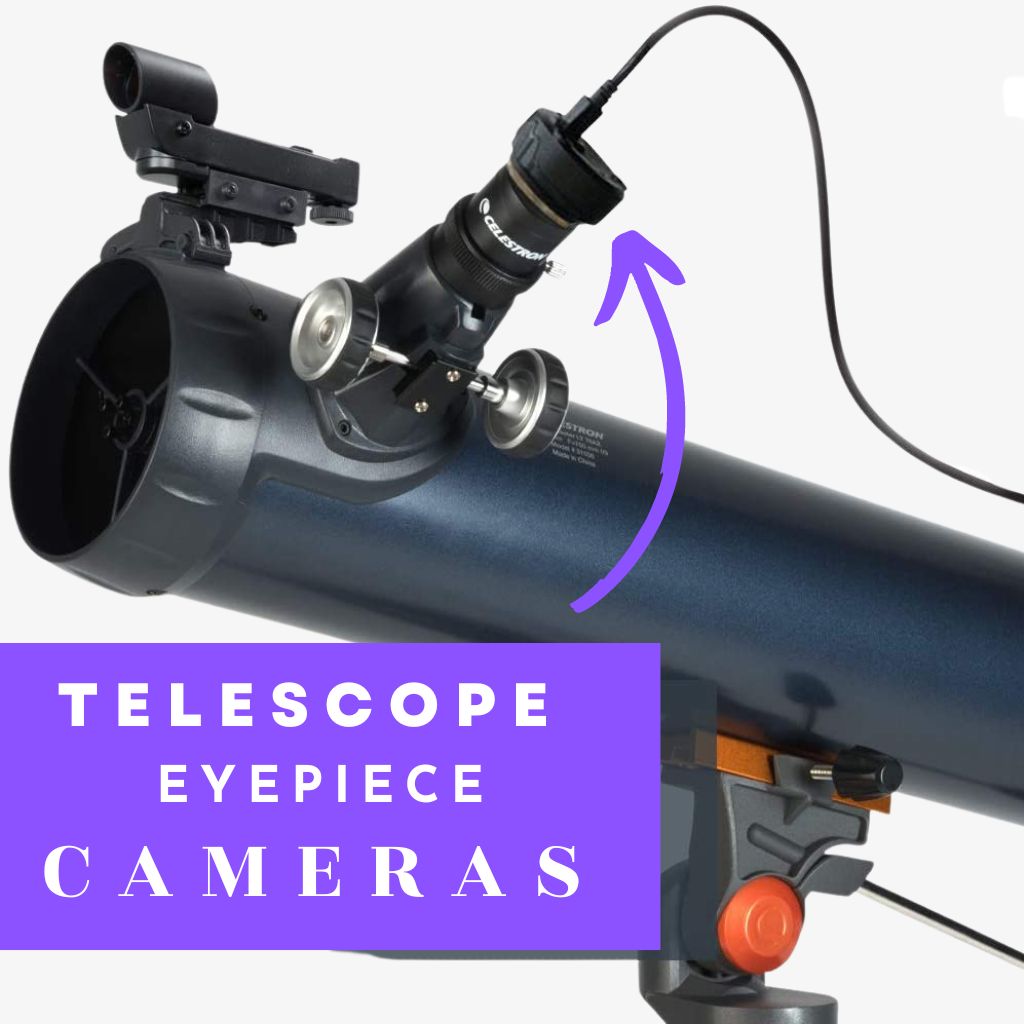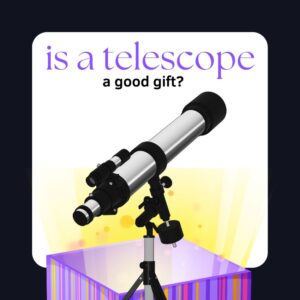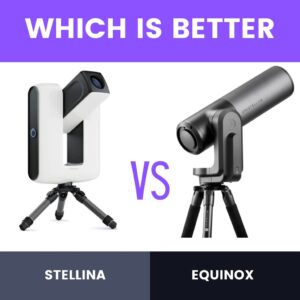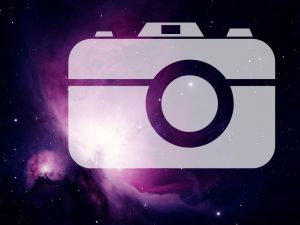This site contains affiliate links to products. I may receive a commission for purchases made through these links.
Telescope eyepiece cameras are innovative devices designed to attach directly to your telescope’s eyepiece, allowing you to capture beautiful photographs and videos of celestial objects in the universe.
If you’re an amateur astronomer or a seasoned stargazer, these top-rated telescope eyepiece cameras offer exceptional image quality, user-friendly features, and compatibility with a wide range of telescopes.
The focal length of your telescope is an important consideration when selecting camera lenses for telescope eyepiece cameras, as it determines the magnification and field of view, enabling astronomers to capture detailed close-ups or wide-angle views of celestial objects.
In this article, we will explore the best options available to enhance your astrophotography journey and unlock a whole new level of celestial beauty.
Let’s get started!
Telescope USB eyepiece cameras
Telescope USB eyepiece cameras enable you to capture high-quality images and videos of celestial objects directly through your telescope.
These cameras connect to your computer via a USB port, providing a convenient and straightforward way to capture and analyze celestial phenomena.
With features like adjustable focus, image and video recording capabilities, and compatibility with various telescope models, USB eyepiece cameras are an excellent choice for astronomy enthusiasts looking to delve into astrophotography and share their discoveries with others.
Here are some recommended options:
1. Celestron NexImage 5 Solar System Imager – Best for planetary astrophotography
The Celestron NexImage 5 Solar System Imager is a powerful USB eyepiece camera specifically designed for capturing high-resolution solar system images.
Its fast frame rate and short exposure times allow you to capture sharp and detailed images of the Moon, planets, and even the Sun (with proper solar filters).
The small pixel size enables the capture of sub arc-second planetary details when used with most telescopes.
The package includes sophisticated camera control and stacking software, providing you with the tools to view and capture live video on your computer, stack the sharpest frames for optimal image quality, and manually adjust various image settings to achieve your desired results.
The camera features a machined aluminum 1.25″ barrel, making it compatible with a wide range of telescopes that accept 1.25″ eyepieces.
The barrel design allows you to use your eyepiece filters with the camera, expanding your imaging possibilities.
With advanced features like an integrated IR-cut optical window, selectable region of interest sub-framing, 2×2 and 4×4 binning, progressive scan, and integrated C-threads for direct connection to a telescope, the Celestron NexImage Burst Color Solar System Imager offers a comprehensive set of tools to enhance your astroimaging experience.
2. Orion StarShoot USB Eyepiece Camera – Best for bright planets, lunar and terrestrial astrophotography
The Orion StarShoot USB Eyepiece Camera is a versatile camera that connects directly to your computer’s USB port. It offers a range of resolution options and is compatible with most telescopes.
With its intuitive software, you can effortlessly capture images and videos of celestial objects. It also includes features like timelapse recording and adjustable exposure settings for capturing great astrophotography.
The Orion StarShoot USB Eyepiece Camera is a fun and practical device that allows you to transmit the real-time view from your telescope to a laptop or PC, providing an exciting way to capture impressive digital movies and images.
You can easily share the captivating view of bright planets, the Moon, and terrestrial targets with your friends, family, and fellow astronomy enthusiasts.
This camera serves as an affordable introduction to the rewarding hobby of astrophotography, offering a great platform for capturing stunning lunar and planetary shots.
However, it is not designed for deep space imaging. Its versatility is noteworthy, as it can fit into any 1.25-inch telescope focuser or 1.25-inch step-down adapter, ensuring compatibility with a wide range of telescopes.
The package includes the Orion AmCap image video capture software, which is compatible with Windows XP/Vista/7/8 Operating Systems, providing a user-friendly interface for capturing and processing your astrophotography.
3. Meade LPI-GM Autoguiding and Imaging Eyepiece Camera (Monochrome) – Best for a wide range of celestial objects
The Meade LPI-GM Autoguiding and Imaging Eyepiece Camera (Monochrome) is a versatile and high-performance device designed for autoguiding and astrophotography purposes.
This camera offers advanced imaging capabilities, allowing users to capture stunning monochrome images of celestial objects.
With its autoguiding functionality, the LPI-GM camera helps astronomers achieve precise tracking and guiding of their telescopes.
It ensures that the telescope accurately follows the desired path of a celestial object, compensating for any slight deviations caused by factors like Earth’s rotation.
This feature is especially crucial for long-exposure astrophotography, as it prevents star trailing and results in sharper, more detailed images.
Equipped with a monochrome sensor, the LPI-GM camera enables astronomers to capture images with exceptional clarity and detail.
Monochrome imaging is highly valued in astrophotography due to its ability to capture a wider range of wavelengths, resulting in enhanced contrast and finer details.
Monochrome images can be combined with various filters to create stunning composite images or highlight specific features of celestial objects.
The Meade LPI-GM camera is designed to be user-friendly, making it suitable for both beginner and advanced astrophotographers. It features a compact and lightweight design, allowing for easy attachment to a telescope’s eyepiece or focuser. The camera connects to a computer via USB, providing convenient control and image capture capabilities through dedicated software.
It is a powerful tool for astrophotography enthusiasts. Its autoguiding capabilities and monochrome imaging performance allow users to capture breathtaking images of the night sky, revealing the beauty and wonders of the universe.
4. Celestron NexImage 10 Solar System Imager – Best for lunar and planetary astroimaging
The Celestron NexImage 10 is a USB eyepiece camera designed specifically for capturing detailed images of the solar system. It features a 10-megapixel sensor and advanced software that allows you to capture high-resolution images of the Moon, planets, and other bright celestial objects.
With its user-friendly interface and compatibility with popular image processing software, it is a great choice for astrophotography enthusiasts.
This camera is equipped with a high-performance CMOS sensor and offers exceptional image quality, being suitable for beginners and experienced users alike.
The upgraded APTINA AR0132 CMOS imaging sensor ensures optimal speed, sensitivity, and value, delivering high-resolution images with its 3856 x 2764 pixel array.
With the one-shot color feature of NexImage Burst, you can instantly capture full-color images without the need for multiple captures or additional filters.
Read the full review here: Celestron NexImage 10 Review
5. iOptron iE5100 Planetarium Imager Color CMOS Eyepiece Camera – Best for solar and planetary imaging
The iOptron iE5100 Planetarium Imager is a versatile and high-resolution CMOS eyepiece camera designed for astro-video and astrophotography enthusiasts.
With a 5MP sensor and a resolution of 2592×1944 pixels, this camera delivers impressive image quality. Whether you want to capture real-time images or record videos, the iE5100 allows you to connect your telescope to a computer screen via a USB cable.
It lets you experience the thrill of viewing live video images of celestial objects such as the Moon, Sun, planets, and even terrestrial objects.
You can also record and save your observations for later playback or frame imaging.
Thanks to its compatibility with 1.25″ focusers or C-thread mounts, the iE5100 provides flexibility in connecting to various telescopes.
Telescope eyepiece video cameras
Telescope eyepiece video cameras are innovative devices that enhance the viewing experience by allowing you to capture live video footage of celestial objects through your telescope.
These cameras are designed to be attached to the eyepiece of the telescope, enabling you to record and share your observations in real-time.
With features like adjustable exposure settings and frame rates, these video cameras provide flexibility and control over the recording process.
When using telescope eyepiece cameras, it’s important to consider the quality and versatility of the camera lens for capturing sharp and detailed images of celestial objects.
Here are some recommended options:
6. Bresser MikrOkular Full HD Camera – Best for beginners
The Bresser MikrOkular Full HD Camera is an excellent choice for novice micrographers and astrophotographers. With this eyepiece camera, users can expand their observation capabilities beyond visual limits and capture those elusive moments of atmospheric stillness where intricate details of planets and the Moon come into sharp focus.
It is a versatile tool that enables microscopists to explore and document the captivating micro-world by capturing video streams, opening up new frontiers of discovery.
The camera offers the ability to broadcast live views through telescopes or microscopes using the Facebook Live feature, enhancing the sharing of celestial and microscopic observations.
Equipped with a CMOS sensor and a resolution of 1920 x 1080 (Full HD), it ensures high-quality imaging performance. The pixel size is 3x3um, allowing for detailed and precise captures.
The package includes adapters for various eyepiece sizes, making it compatible with most microscopes and telescopes.
The camera supports multiple image formats and comes with user-friendly software compatible with Windows 7, 8, and 10. Additionally, it offers plug-and-play functionality on Mac systems.
7. Celestron NexImage Burst Monochrome – Best for solar, lunar, and planetary astrophotography
The Celestron NexImage Burst Monochrome is a powerful astronomy camera that features the advanced Aptina AR0132 CMOS imaging sensor.
This state-of-the-art chip, widely used by imaging companies globally, ensures exceptional image quality and sensitivity for capturing celestial objects.
With this camera, you can conveniently view and capture live video of the Sun, Moon, and planets directly on your computer.
The NexImage Burst Monochrome camera offers manual adjustment options, allowing you to fine-tune settings such as gain, exposure time, and frame rate to achieve optimal results.
Its machined aluminum 1.25″ adapter barrel is designed with C-threads, enabling a direct threaded connection to almost any telescope, ensuring compatibility and ease of use.
Telescope electronic eyepiece camera
Telescope electronic eyepiece cameras combine the functionalities of traditional eyepieces with the capabilities of digital cameras. These devices allow astronomers to capture high-quality images and videos of celestial objects directly through their telescopes.
With digital eyepieces, users can easily connect their telescope to a computer or other devices, enabling real-time viewing, recording, and sharing of astronomical observations.
These cameras offer features like adjustable exposure settings, image stacking, and post-processing options, allowing astronomers to enhance the clarity and detail of their captured images.
Here are some recommended options:
8. Datyson 1.25″ Telescope Digital Electronic Eyepiece Camera – Best for lunar and planetary astrophotography
The Datyson 1.25″ Telescope Digital Electronic Eyepiece Camera is a valuable accessory that enhances your astrophotography experience. With this camera, you can effortlessly transmit the real-time view from your telescope to a laptop or PC, enabling you to capture stunning digital movies and images.
It’s perfect for sharing captivating views of planets, the moon, and terrestrial targets with your friends, family, and fellow astronomy enthusiasts. While it excels in capturing lunar and planetary shots, it is not designed for deep-space imaging.
This versatile camera seamlessly fits into any 1.25-inch telescope focuser or 1.25-inch step-down adapter, offering convenience and compatibility.
It is a plug-and-play device, ensuring easy and real-time data transmission to your PC through a USB port.
With its high resolution, fast transmission rate, and portable design, the Datyson 1.25″ Telescope Digital Electronic Eyepiece Camera is a reliable and efficient tool for your astrophotography endeavors.
9. XiLiHaLa Telescope Electronic Eyepiece Camera – Best for lunar astrophotography
The Telescope Electronic Eyepiece by XiLiHaLa is a lightweight and user-friendly device that offers a seamless Wi-Fi connection for easy remote control and monitoring.
It is designed to be compatible with a variety of telescope models that feature eyepieces ranging from 1.0 to 1.25 inches in diameter.
With its live streaming capability, this eyepiece camera allows you to capture and view high-definition video of your celestial observations in real time.
The built-in rechargeable Lipo Battery provides a long-lasting power supply, offering an estimated battery life of 5-8 hours, ensuring extended usage without interruption.
This feature allows users to step away from the telescope while still maintaining access to valuable target information.
10. YYOYY Electronic Telescope Eyepiece camera – Best for lunar and planetary astrophotography
The YYOYY Electronic Telescope Eyepiece camera is a 1.25″ telescope digital USB electronic eyepiece camera designed for astrophotography. It offers a useful USB connection that allows you to transmit the view from your telescope to your computer in real time.
With this camera, you can easily share the view of planets, the moon, and terrestrial targets with friends, family, and fellow astronomy enthusiasts. While it excels in capturing lunar and planetary shots, it is not suitable for deep-space imaging.
The camera is compatible with any 1.25-inch telescope focuser or 1.25-inch step-down adapter, ensuring versatility in its usage.
With its high-performance capabilities and guaranteed quality, this electronic eyepiece is a valuable tool for capturing celestial wonders.
11. Pomya Store Electronic Telescope Digital Electronic Eyepiece Camera – Best for lunar and planetary astrophotography
Pomya Store Electronic Telescope Digital Electronic Eyepiece Camera is a 1.25″ telescope digital electronic eyepiece camera designed for astrophotography and offered by the Pomya Store.
With its plug-and-play functionality, it provides convenient real-time data transmission to a PC via the USB port. It also allows you to share images of planets, the moon, and terrestrial targets with others.
It is ideal for lunar and planetary shots but is not recommended for deep-space imaging.
The camera boasts a high resolution and fast transmission rate, and its sleek design makes it easy to carry. It is compatible with any 1.25-inch telescope focuser or 1.25-inch step-down adapter, ensuring versatility in its usage.
FAQs about telescope cameras
Below are answers to some frequently asked questions:
Do telescopes come with cameras?
Telescopes do not typically come with built-in cameras. Most telescopes are designed to provide a clear view of celestial objects, and the choice to add a camera for astrophotography or other imaging purposes is left to the user.
However, there are specialized telescope models that may include integrated cameras or camera attachments, such as the Unistellar eVscope eQuinox, but they are less common and usually more expensive.
What do you call a telescope camera?
A telescope camera is commonly referred to as an astrophotography camera. These cameras are specifically designed for capturing images and videos of celestial objects through a telescope.
They often have features and specifications tailored to the unique requirements of astrophotography, such as long exposure capabilities, high sensitivity to light, and noise reduction technology.
The camera sensor plays a crucial role in determining the image quality and sensitivity of telescope cameras, ensuring a clear and accurate representation of astronomical objects.
For those seeking portability and convenience, a compact camera design can be advantageous when using telescope cameras, allowing for easy transportation and setup during observing sessions.
The camera body should be durable for reliable performance in various observing conditions.
What is the cost of a telescope camera?
The cost of a telescope camera can vary significantly depending on the type, brand, and features it offers. Entry-level astrophotography cameras can start around $100 and go up to several thousand dollars for more advanced models.
The price may also depend on whether you opt for a dedicated astrophotography camera or use adapters to connect a regular digital camera or smartphone to your telescope.
Can I attach a camera to a telescope?
You can attach a camera to a telescope for astrophotography purposes. There are various camera adapters available that allow you to connect different types of cameras, such as a mirrorless or DSLR camera, to the eyepiece or the back of the telescope.
Additionally, smartphone adapters enable you to use your smartphone’s camera to capture images and videos through the telescope’s optics.
Using a camera adapter, cameras can be securely attached to telescopes, ensuring proper alignment and maximizing the potential for capturing stunning astronomical images.
A remote shutter release cable can be a valuable accessory for telescope cameras, allowing for precise control and minimizing any potential vibrations during long-exposure astrophotography.
For more detailed information on attaching a camera to a telescope, please refer to our comprehensive article: How to Attach Camera to Telescope? (Explained).
Takeaway: Capture images of celestial objects with the best telescope eyepiece cameras
Telescope eyepiece cameras are powerful tools that allow enthusiasts to explore and capture the beauty of the night sky.
Whether for astrophotography or live observation, these cameras provide an immersive experience by transmitting real-time views through telescopes to laptops or PCs.
The top-ranked telescope eyepiece cameras offer a range of features and capabilities to suit different needs and preferences.
With advancements in sensor technology, users can capture high-resolution images and videos of celestial objects, including the moon, planets, and even deep sky astrophotography.
These cameras also facilitate the sharing of astronomical views with friends, family, and fellow astronomy enthusiasts, fostering a sense of community and inspiring a deeper appreciation for the universe.
It is important to note that the market offers a diverse selection of telescope eyepiece cameras, each with its own strengths and characteristics.
Researching and choosing a camera that aligns with individual requirements and preferences is recommended.
Telescope eyepiece cameras open up new possibilities for capturing and sharing the beauty of the universe, allowing amateur astronomers to embark on their own celestial journeys and contribute to the world of astrophotography and scientific exploration.
Don’t forget to subscribe to our newsletter where you’ll find the latest cosmic discoveries, expert stargazing tips, and exclusive subscriber deals. Embark on your cosmic journey if you haven’t already!
You may also like:
- Svbony SV205 Telescope Camera Review (Before Purchase)
- SVBONY SV105 Camera Review
- Barlow Lens vs Eyepiece: Making the Right Choice for Your Telescope Setup
- 2-Inch Telescope Eyepieces: Top Picks & Tips
- Telescope vs Camera Lens (Astrophotography)
- Best Camera For Astrophotography
- Is Astrophotography Expensive?
- Astrophotography With DSLR (Beginners Guide)
- 15 Best Telescopes for Astrophotography
- Unistellar eVscope Telescope Review
- 6 Best Telescopes With Phone Adapters (Before Purchasing)









